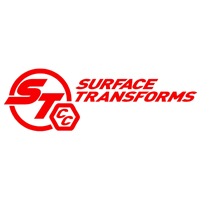Out of all the different components and systems that make up a modern car, brakes are not as flashy as a turbocharged W16 engine or a “gas guzzling” V12. However, all that power is completely useless if you can’t bring your car to a stop in a safe, controlled manner. Brakes work by converting the kinetic energy of a moving car to heat energy by means of friction. In this article, we’ll look at some of the advantages of modern day carbon ceramic brakes.
In most modern cars, the braking system consists of a disc, calliper, and pads. The calliper houses the pads and upon application of the brake pedal, the pads are squeezed against the disc on two sides, creating friction. The clamping force is transferred from the pedal to the pads by means of a hydraulic system. The heat generated by all this friction is dissipated in part by the disc. This is the reason that discs have grooves and/or holes in them, to allow for better heat transfer.
Surface Transforms plc (LON:SCE) are experts in the development and production of carbon-ceramic materials and the UK’s only manufacturer of carbon-ceramic brakes for automotive use.


